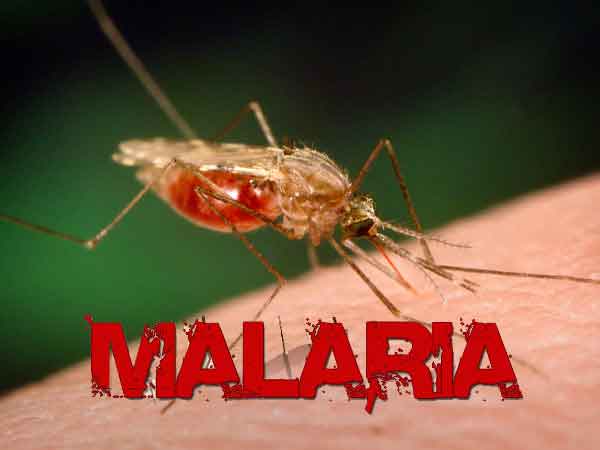
Malaria remains a major killer in Africa. In 2019, malaria was estimated to have infected 229 million people worldwide and killed over 400,000, with 94% of cases and deaths recorded in Africa. The impact is highest among children and pregnant women; with the affected newborns experiencing low birth weight resulting in early death or lifelong disability; and children that reach school age, experiencing disrupted learning due to multiple episodes of malaria, seizures and cognitive impairment [1]. Emerging health technologies hold potential for control and elimination of mosquitoes that transmit malaria if deployed along with the conventional interventions, but this potential can be realized if these technologies are tested and piloted in Africa.
Over the past decades, the world has made significant gains in containing malaria, but minimal breakthroughs in ending its spread due to several factors including low coverage of prevention measures (insecticide-treated nets, indoor residual spraying, etc.) and high dependency on one rather than a concurrent application of the available interventions. For instance, those who may have been protected by insecticide-treated nets at night are somewhat exposed to mosquitoes in the mornings and early evenings. Another threat to eliminating malaria is that both the mosquitoes and parasites are constantly evolving thus becoming resistant to insecticides and antimalarial drugs, respectively [1,2].
If malaria was eradicated, say in 2019, hundreds of thousands of lives could have been saved. The reduction in deaths would be a huge milestone especially in malaria endemic countries like Malawi where 30% of hospital deaths are from malaria [3]. Hundreds of thousands of children at risk would have lived longer, as they accounted for 67% of all malaria deaths worldwide. Without malaria, US$ 7.3 billion global funding for malaria control and elimination would have been invested in some other development priorities. Many governments would have experienced a great relief in their health budgets and bailed from ever-increasing debts meant for the fight against malaria. For example, the Government of Nigerian secured credits from three multilateral banks (the World Bank, African Development Bank, and Islamic Development Bank) totaling US$364 million for malaria interventions in five years (2020–2024) [4].
The direct costs of malaria (illness, treatment, premature death, etc.) are estimated to be at least US$ 12 billion per year and the cost of lost economic growth is many times more. As the funding gap gets wider in each passing year, there is a need to come up with innovative and lasting solutions to eradicate malaria [1,5].
Some of the technologies being developed, tested or piloted for Malaria control and elimination
The African Institute for Development Policy (AFIDEP) through the Platform for Dialogue and Action on Health Technologies in Africa (Health Tech) conducted a landscape and political economy analysis of emerging health technologies that have the potential to reduce the disease burden in sub-Saharan Africa. In regard to malaria, the study revealed many new tools and technologies for tackling the spread of malaria that are under development across Africa, including the gene drive technology; Ivermectin drug, malaria vaccine; sterile insect technology; piperronly butoxide (PBO) nets; attractive toxic sugar baits (ATSB); and drones for larval control.
The gene drive technology is a genetic biocontrol strategy for making vector populations incompetent to transmit disease agent, or for substantially reducing their population. There are studies going on in Burkina Faso, Mali, and Uganda that hope to test this technology in the coming years. And in Ghana, the focus of the studies is on assessing the ecological effects of eliminating the Malaria-transmitting mosquitoes from the environment.
The attractive toxic sugar baits concept exploits the sugar feeding behavior of mosquitoes, attracting them to sugar feed from a source containing insecticidal ingredient. It is currently being tested in Mali, Kenya and Zambia.
Ivermectin reduces new cases of malaria by making the blood of a person who has ingested the drug lethal to malaria carrying mosquitoes that bite them, killing mosquitoes and therefore reducing the likelihood of infection of others. Large scale field studies for ivermectin drug is ongoing in The Gambia, Burkina Faso, Tanzania, Mozambique, Senegal, Liberia and Cote d’Ivoire.
Malaria vaccines research and development has reached advanced stage in selected African countries. Despite more than a hundred vaccine candidates having entered clinical trials, the only licensed malaria vaccine to date is RTS.S. After successful piloting of RTS, S vaccine in Kenya, Ghana and Malawi, WHO recommended its widespread use among children in sub-Saharan Africa and in other regions with moderate to high P. falciparum malaria transmission.
The various types of malaria vaccine candidates fall under different broader categories including pre-erythrocytic vaccines, vivax vaccines, whole sporozoite vaccines, blood stage vaccines, transmission-blocking vaccines and others [7]. While RTS, S, one of the pre-erythrocytic vaccines reduces clinical malaria risk in African children, newer candidates such as R21, PfSPZ whole sporozoite vaccines and full-length CSP immunogens seek to improve on its efficacy. For instance, the second phase human trial of R21 conducted in Burkina Faso suggests efficacy of 77%, which is way higher than that of the approved RTS, S at 39% [8].
Sterile insect technology is a vector management method by which a population of mosquitoes is controlled by releasing mass-reared sterile male mosquitoes in a target area. When these males mate with females in the wild, they produce no offspring. Lab trials for sterile mosquitoes is taking place at Wits Research Institute for Malaria, South Africa.
Another new innovative intervention being tried in Rwanda is the use of drones for larval control. The technique uses high resolution drone mapping of larval sources especially in rice fields and reduces mosquito population by the use of larvicides or modifying larval habitat, known as larval source management.
The study findings further provided useful pointers to potential audiences, the key gaps in on-going advocacy efforts on emerging technologies in health and in general have informed the design of an African-driven Platform for Dialogue and Action on Health Technologies in Africa (the Health Tech Platform), which is aimed at facilitating objective, transparent, and balanced discussions on development and use of emerging health technologies in African. As more evidence on transformative health technologies emerges, the Health Tech Platform is providing a stage for everyone, including policymakers, CSOs, Media, and the public to engage in order to keep abreast of these efforts and importantly have their voice heard so that these new tools can be more responsive to the needs of their beneficiaries in Africa.
References
- World Health Organization (2020). World malaria report 2020: 20 years of global progress and challenges. Geneva: WHO.
- Imwong M, Hien TT, Thuy-Nhien NT, Dondorp AM, White NJ. Spread of a single multidrug resistant malaria parasite lineage ( PfPailin ) to Vietnam. Lancet Infect Dis 2017; 17: 1022–3.
- USAID President’s Malaria Initiative (2016): Evaluation of the Impact of Malaria Control Interventions on All-Cause Mortality in Children under Five Years of Age in Malawi
- USAID President’s Malaria Initiative FY 2020 Nigeria Malaria Operational Plan
- Center for Disease Control: https://www.cdc.gov/malaria/malaria_worldwide/impact.html
- African Institute for Development Policy (2021). Landscape and political economy analysis of emerging technologies in Africa
- Duffy EP & Gores JP (2020). Malaria vaccines since 2000: progress, priorities, products: https://www.nature.com/articles/s41541-020-0196-3
- https://www.gavi.org/vaccineswork/




